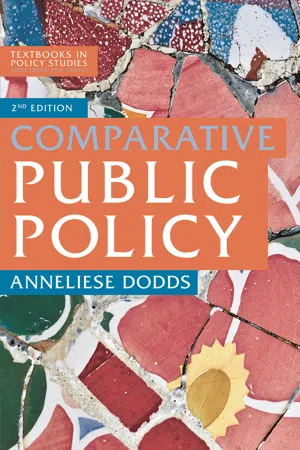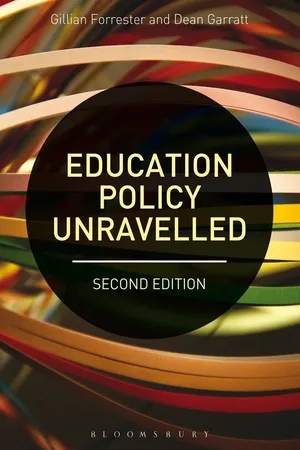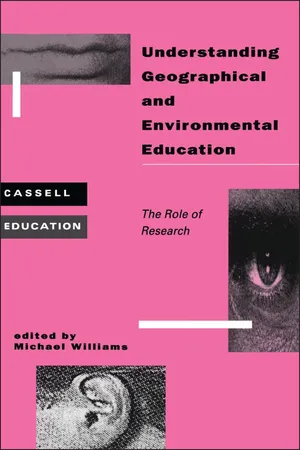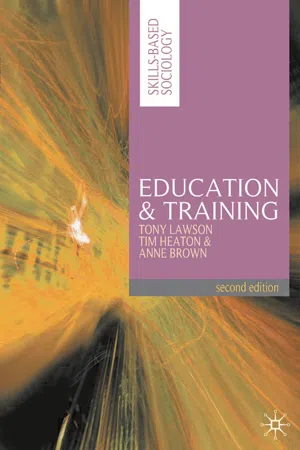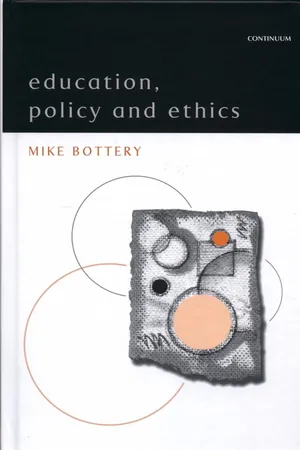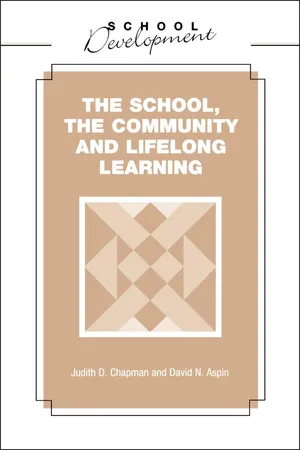Social Sciences
Government Education Policies
Government education policies refer to the set of rules, regulations, and initiatives implemented by the government to shape and regulate the education system. These policies often address issues such as curriculum standards, funding allocation, teacher qualifications, and educational equity. They play a crucial role in shaping the quality and accessibility of education for individuals within a society.
Written by Perlego with AI-assistance
Related key terms
1 of 5
6 Key excerpts on "Government Education Policies"
- eBook - PDF
- Anneliese Dodds(Author)
- 2018(Publication Date)
- Bloomsbury Academic(Publisher)
This chapter first considers theories which have attempted to explain why, despite pressures towards conformity, differences persist between different nations’ education systems, before examining the influence of global pressures on education policy-making. The chapter then examines government activity in relation to edu-cation policy involving the use of financial resources (the provision of tax-funded education, and of tax expenditures to support education), authority (the regulation and control of providers of education, of educational standards and content, and pay and conditions for teachers), organization (governments’ administration and delivery of education, including their introduction of competition into educational systems, use of streaming or comprehensivization, and centralization or decentrali-zation of education services), and of information (the provision of information and advice concerning education services, and to guide policy-making). The last section of the chapter considers the scope of education policy and, in particular, the impact of class, gender, race and age on access to education and incorporation into formal education services. 241 The Context: Theories of Education Policy Development The Context: Theories of Education Policy Development Many of the first attempts to compare education policies across countries were allied with attempts to improve educational provision. Hence, in 1817, Jullien de Paris – commonly seen as the founder of comparative education (Bereday, 1964 : ix) – set out a list of different ‘checkpoints’ which could be used to study, assess and, ultimately, improve schools in different national contexts (Crossley, 2007 : 259). Other approaches attempted to generate quantitative generalizations about the preconditions for particular types of educational developments (Sandiford, 1918 ; Hans, 1949 ; Holmes, 1965 ; Noah and Eckstein, 1969 ; Verner, 1979 ). - eBook - PDF
- Gillian Forrester, Dean Garratt(Authors)
- 2016(Publication Date)
- Bloomsbury Academic(Publisher)
The nature of education policy This book explores the nature of education policy, attempting to ‘unravel’ its meaning in the broadest and narrowest senses. The purpose of the book is to disaggregate education policy so that significant features and characteristics of policy-making and a number of related issues can be dismantled, separated out and examined in depth in order to illuminate particular and important enduring themes and trends as well as encourage the reader to engage in deeper exploration. It is never possible to examine education policy purely on its own as a single, discrete entity. Education policy-making does not ‘happen’ in a vacuum or bubble, but is subject to a range of competing influences, which can be broadly categorized under the umbrella of social, political, economic, technological, religious and cultural factors. The book therefore examines education policy in the context of a range of constituting factors which have all influenced and continue to impact education in a variety of ways. Education policy is constantly changing, and, over time, different factors Chapter Outline The nature of education policy 1 The policy process 6 Ideology and discourse 7 Policy developments in the modern era: An historical overview 11 Purpose and structure of the book 20 Introduction: The Development of Education Policy in the Modern Era 1 Education Policy Unravelled 2 have had different levels of prominence; so education systems, organizations, educational activities, learners and those working in education have been shaped in a variety of ways at different points in time. Adding to this complexity is an assortment of different individuals, groups, events, movements, ideologies and perspectives, which may in some way contribute to and shape policy ‘problems’ and ‘solutions’ at different historical moments. - Michael C. Williams(Author)
- 1995(Publication Date)
- Continuum(Publisher)
This, however, is conducted within whole-school policy relating to the whole curriculum, developed at institutional level. At higher levels, regional and national responsibilities may be identified. In many countries education is managed at the regional level by education authorities or school boards, and they in turn are responsible to authorities at national level. For education, these may include government education departments, but also national bodies charged with broad educational policy and practice responsibilities (for example, the School Curriculum and Assessment Authority in England), or with specific academic or sectoral interests (for example, the Joint Committee on Geographic Education in the USA). This may be seen as a hierarchy of policy-making and interpretation. Policy is made at each of these levels, but in each case it is constrained or at least influenced by that made at higher levels. Policy implementation is essentially a top-down process, although the degree of influence of lower levels in the hierarchy in the formulation and development of policy will always be important - either because that influence has been significant or, perhaps more frequently, because it has not! The policy framework now stretches beyond the national level, however. The develop-ment of policy by government is only in part dictated by domestic objectives, and governments operate as members of international groupings both formal and informal. In the United Kingdom, government policy is in part influenced by decision-making at the level of the European Union and by policies agreed by all members of the Union. In addition, the government's participation in wider international forums and its voluntary agreement and role as signatory to international treaties and protocols provides a frame-work within which domestic policy will operate and be developed.- eBook - PDF
- Tony Lawson, Tim Heaton, Anne Brown(Authors)
- 2017(Publication Date)
- Red Globe Press(Publisher)
Chapter 2 Educational Policy and Systems in Britain: The Background to Changes in the 1980s and 1990s By the end of this chapter you should: • be aware of how educational policy has been shaped by certain key objectives • have a critical understanding of early educational policies in Britain • be familiar with comprehensive schools and the conflicting views there are about them • appreciate the arguments for and against private schools • understand that educational policy since 1976 has been introduced for social, political and economic reasons INTRODUCTION Chapters 2, 3 and 4 examine the significance of educational policies in Britain. Educational policies, like all social policies, are designed to bring about change(s) in society. As sociologists we are interested in the impact that social policies make on the behaviour of people and institutions. Educational poli-cies are important for three reasons. First, they shape the education systems in which teachers, lecturers and students work. Second, they determine in part the degree to which societies can become meritocratic – that is, those who are talented rise in the social structure. Third, they shape what is taught in schools 7 8 Education and Training and colleges. In this chapter we provide an overview of the debates surround-ing early educational policies, while Chapter 3 focuses on the issues that have emerged from policy developments in the 1980s, 1990s and 2000s. Attention is also given in this chapter to private-sector schooling. This exists outside state provision, and is not constrained by the same government educational policies that we shall be focusing on. When reading Chapters 2, 3 and 4 it is essential that you do not treat them in isolation from the rest of the book. Subsequent chapters will examine dif-ferential educational achievement by social class, gender and ethnicity; and the role of education and training in society. - eBook - PDF
- Mike Bottery(Author)
- 2001(Publication Date)
- Continuum(Publisher)
Chapter 2 Educational policies: the national context Introduction We are probably more globally aware that at any stage in history. We see the almost instantaneous report of news from places we might otherwise never have known existed. We see how our own country is but one player in the production of cars, videos and other items of consumption. As we travel around the world to an extent never dreamed of by previous generations, we see that the same multinational companies have advertisements and bases wherever we go. What we thought was a national company is actually a subsidiary of something much larger, and with little allegiance to our own country. There can be little doubt, then, that global forces are producing a widening of personal vision, just as they are producing a convergence of national policies, though some forms, particularly economic and political, may be neither inevitable nor desirable. As argued above, nations need to be able to distinguish between descriptive and normative forms of globalization if they are not to be driven into actions which in the long run are profoundly damaging to them. Yet, while important policy convergences exist, there are also strong divergences, as nations mediate these forces. This happens because nations are underpinned by different philosophical, political and social values, by long and individual political and social histories and by the very different personalities and beliefs of those pushing through the legislation. Together, these factors produce very different mediations of such global trends. This chapter describes one such national and educational 28 Education, policy and ethics mediation. It examines changes occurring at economic, philo-sophic, social and political levels in the UK, and argues that, while a new agenda for educational policy is having considerable effect here, much of it actually originated in the USA. - eBook - PDF
- Judith Chapman(Author)
- 1998(Publication Date)
- Continuum(Publisher)
Such differences of vision and perspective are fundamental to conceptions of the idea of'public service', the public provision and resourcing of goods and services, and to governments' responses to questions associated with the governance, steer-ing and management of education systems and schools (cf. Chapman and Aspin, 1995b). The key questions in the provision of education, therefore, are ones that concern the form and content of our systems of values, codes of ethics and standards of conduct, that shall be translated into policy and become normative for both individual and society. In policy debates about the future of education, these questions are of central concern; arriving at agreements as to the sub-stance of the values and agenda that shall underpin a country's educational norms and conventions must logically precede questions concerning the chron-ology or practical ways and means of their institutional realization and implementation. It is only when governments have settled their policies on decisions of principle, and secured some agreement about substance, that they can then tackle the further problems of operationalization, implementation and management. As policy-makers face the issue of the provision of lifelong learning for all, it is essential that they reconsider the questions of substance associated with the provision of initial education and its relationship to the goals of an economically sound society, yet one that is also democratic, socially inclusive and ethically just. Some countries have traditionally supported the principle that opportun-ities should be provided for all individuals to have access to intellectual challenge and a high quality and empowering curriculum during the years of initial education. This principle is seen as being among the most important features of a more just and democratic society - one in which social justice and equality of opportunity become achievable goals.
Index pages curate the most relevant extracts from our library of academic textbooks. They’ve been created using an in-house natural language model (NLM), each adding context and meaning to key research topics.
